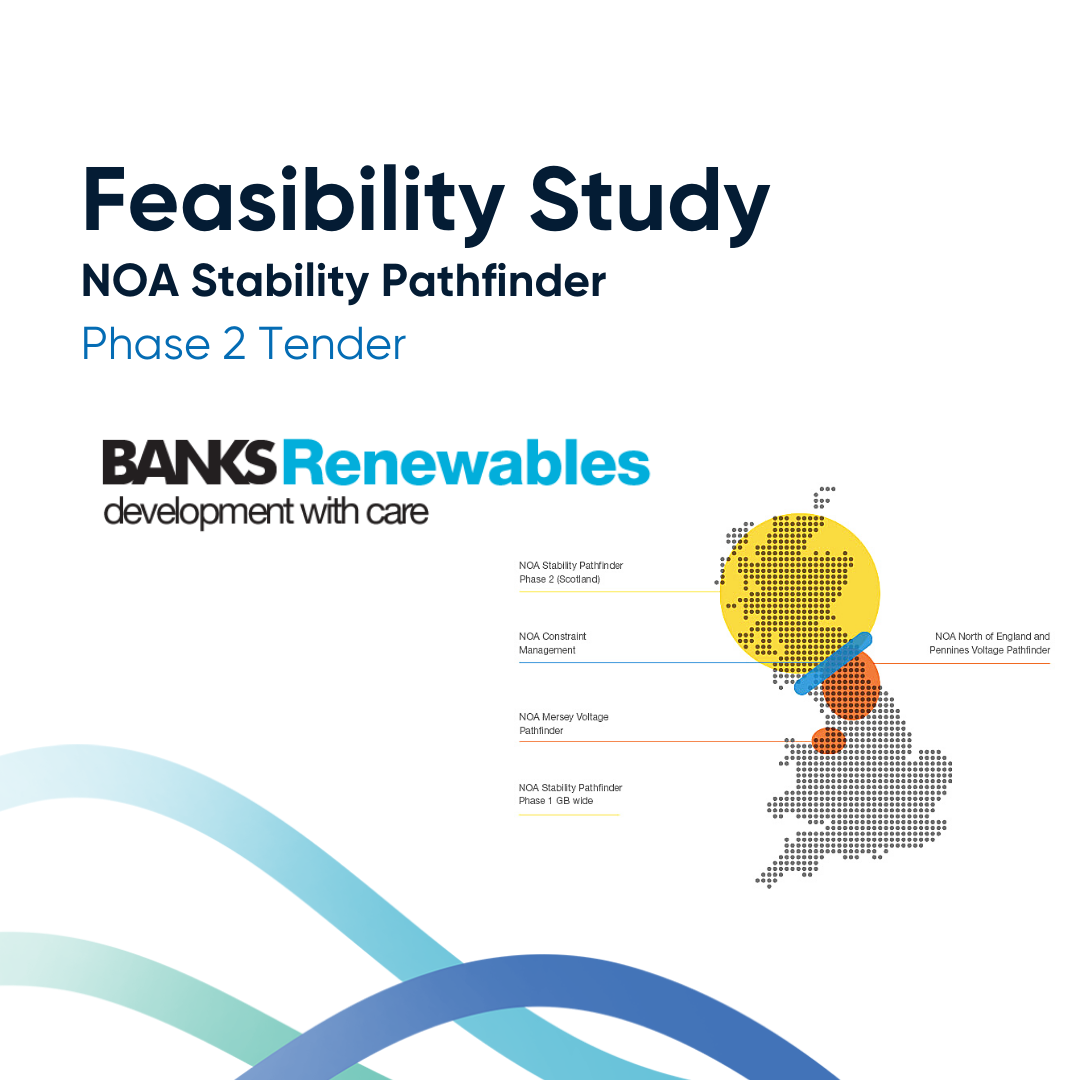
Project Introduction
A key part of becoming an NG ESO stability provider is the acceptance of a comprehensive technical feasibility study. Enspec Power was selected by Banks Renewables to carry out the feasibility study for their proposed stability solutions at two of their operational Wind Farms (WF’s). Download the full case study below for a more in-depth overview of what was included within this feasibility study and the outcomes of the submission.

Feasibility Study Overview
The study required Enspec to develop a dynamic model of the proposed connection locations and then integrate the dynamic synchronous condenser model provided by the prospective supplier. The aim of the tests was the quantify the performance of the proposed solution and allow NG ESO to assess the level of fault level and inertia that could be offered.

Fault Current Contribution
This validated dynamic model was then used to carry out the NG ESO prescribed tests. NG ESO had prescribed specific test cases and had also provided a report submission template for the results. Enspec was able to work with this template and the 100’s result graphs to develop a final report submission that clearly communicated the performance of the proposed condensers against the requirements. Upon submission to NG ESO, Banks Renewables and Enspec received feedback that the feasibility study had satisfied all the criteria and that the solutions were clear to continue to the tendering stage.

What our client says
“Banks Renewables worked with the ENSPEC team as part of the NGESO Stability Pathfinder Phase 2 Tender where they provided support throughout the Feasibility Study stage. This stage of the process required ENSPEC to create and then review a detailed electrical model of an operational synchronous condenser and how this would interact with the existing wind
farm and substation infrastructure. This helped ensure that the contribution of the proposed solution to short circuit contribution and inertia at multiple points on the network was clearly quantified. Throughout this process ENSPEC were thorough and knowledgeable when queried on any of the technical aspects associated with the model itself or on the wider system. Questions or points raised had answers provided quickly and correctly, and the quality of the final report provided was confirmed by the NGESO review where no issues were encountered from any of the simulations. Special thanks to Tim and Kerim who supported us throughout Phase 2 of the Stability Pathfinder Tender.”
Find out more about Power System Studies here.

Stability Pathfinder Feasibility Case Study Banks Group
Send download link to: